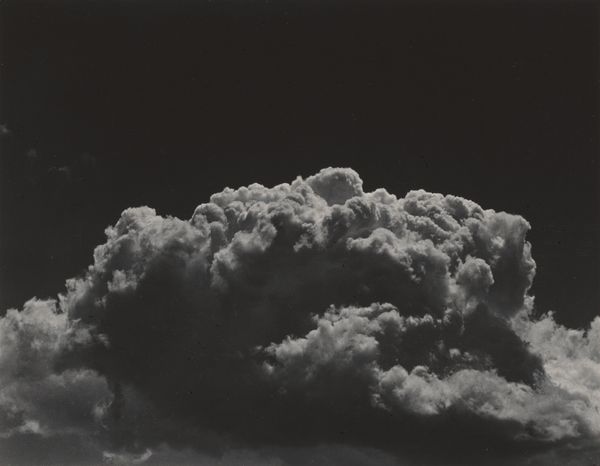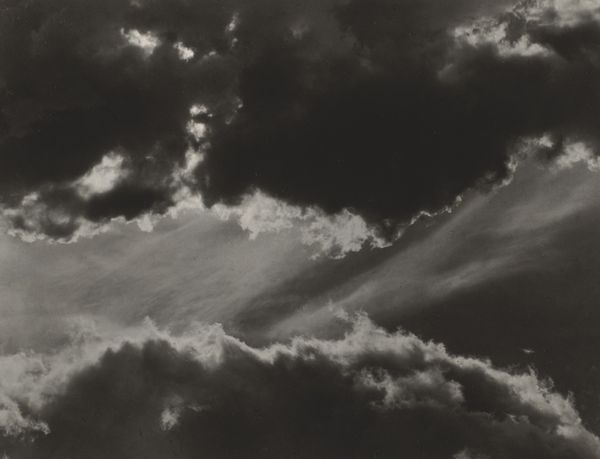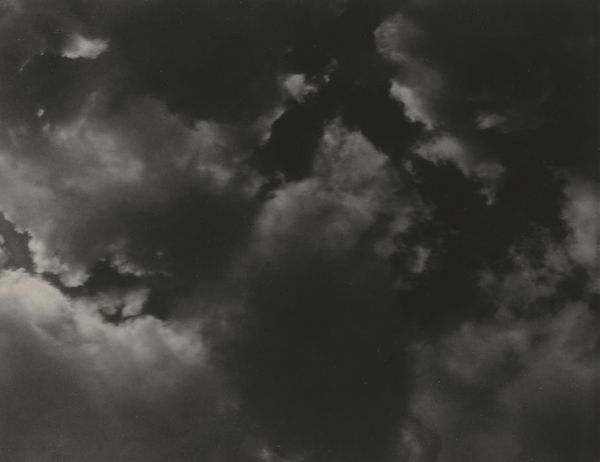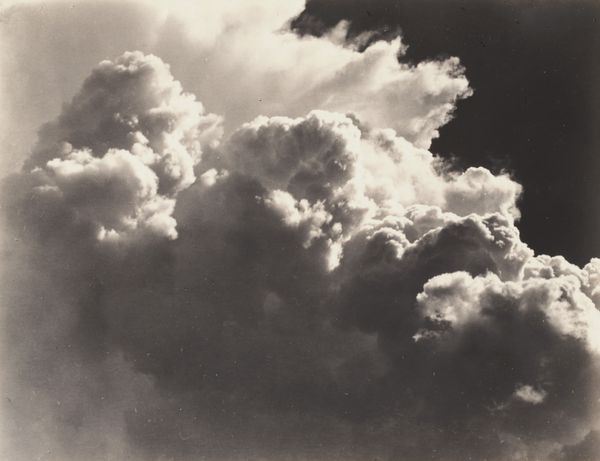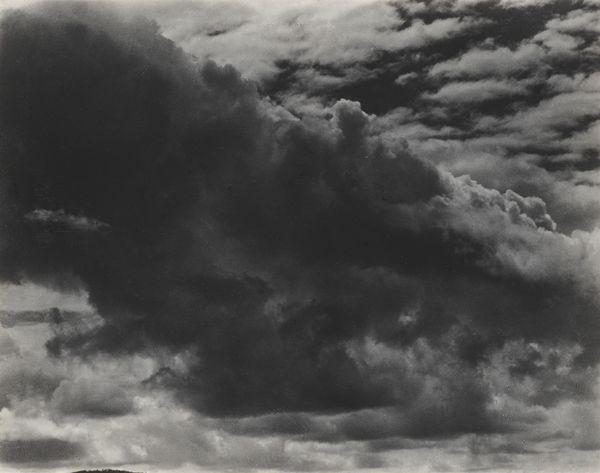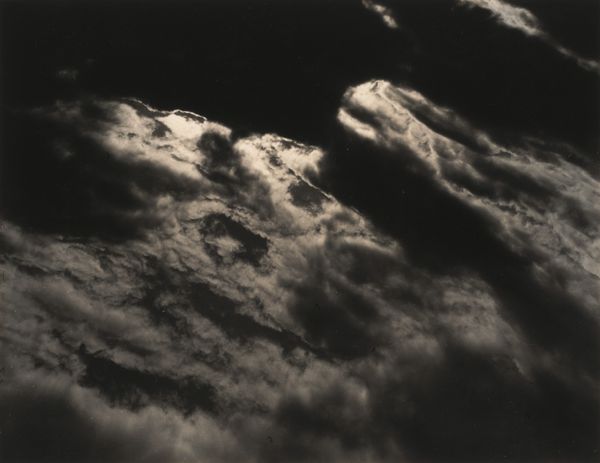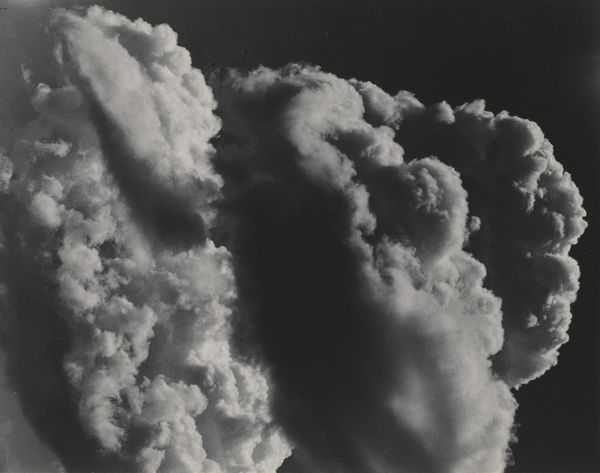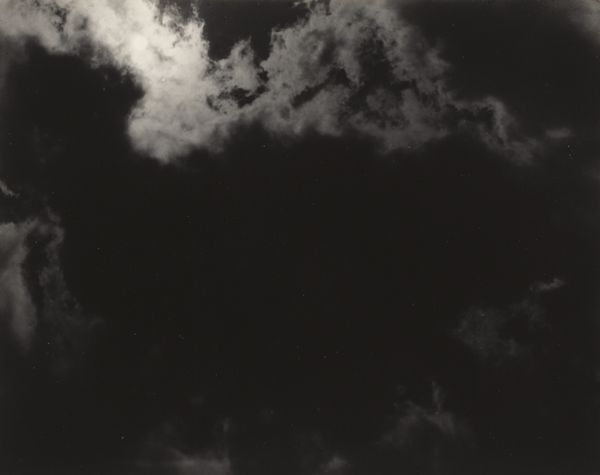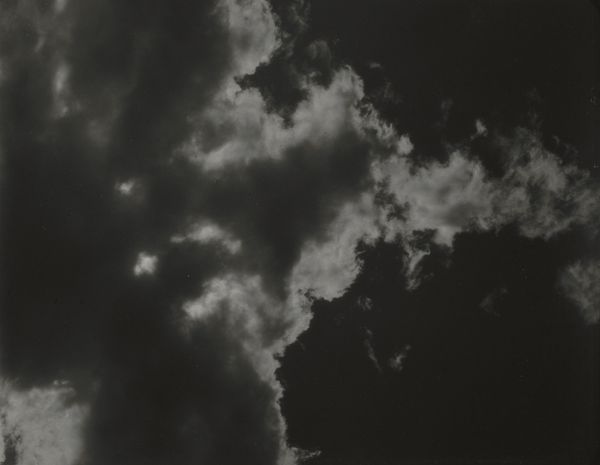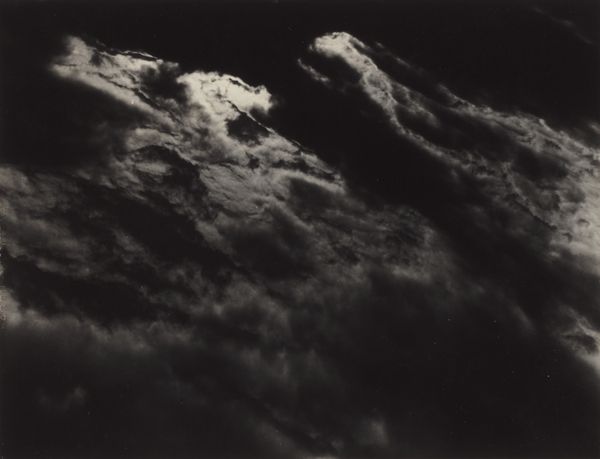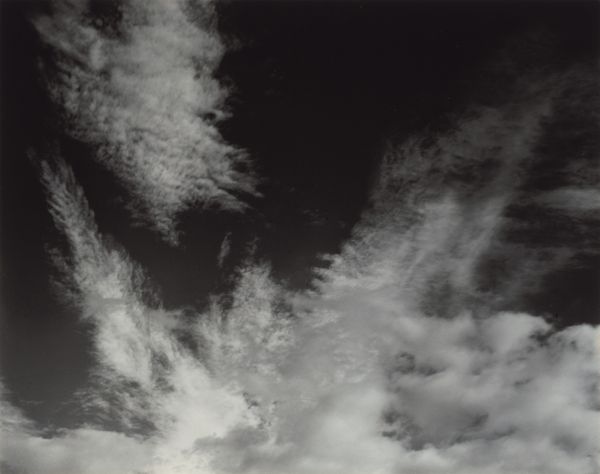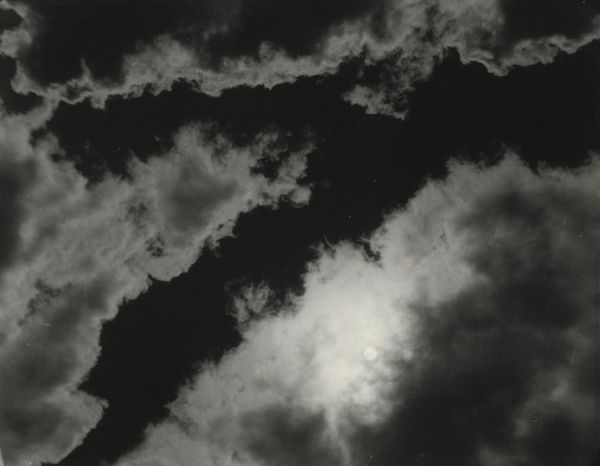
Dimensions: sheet (trimmed to image): 8.6 x 11.7 cm (3 3/8 x 4 5/8 in.) mount: 34.1 x 27.5 cm (13 7/16 x 10 13/16 in.)
Copyright: National Gallery of Art: CC0 1.0
Editor: Alfred Stieglitz captured "Equivalent X1" in 1927 using a gelatin silver print. It's a study of clouds, stark and beautiful. There is a poetic quality to the composition. How do you interpret this work? Curator: Well, it isn't just about the clouds themselves. Stieglitz wasn't interested in simply documenting them. He called this series "Equivalents," suggesting that these cloudscapes were equivalents to his own emotional states, a language for his deepest feelings. Editor: So the clouds aren't just clouds, they’re… metaphors? For what, exactly? Curator: Perhaps his own struggles, his passions, fleeting moments of joy or despair. What do they evoke for *you*? Look at how he contrasts the dark, brooding sky with the luminous, almost sculpted forms of the clouds. Do you see a tension, a release? Maybe he's hinting that the external world mirrored an internal truth? Editor: I think I see it now! The dark sky feels heavy and the bright clouds seem to be emerging from it, lighter, hopeful. Curator: Exactly. Stieglitz used the camera to unlock hidden worlds, turning landscape into a language of emotion. It's less about *what* is depicted, and more about *how* it makes us *feel.* His ability to connect the objective world to the subjective experience through simple scenes elevates photography from mere documentation into pure art. He proved that feeling exists everywhere. Editor: I came here expecting it was about clouds but found out that it’s about so much more! Now I can see and understand that a little bit better.
Comments
No comments
Be the first to comment and join the conversation on the ultimate creative platform.
